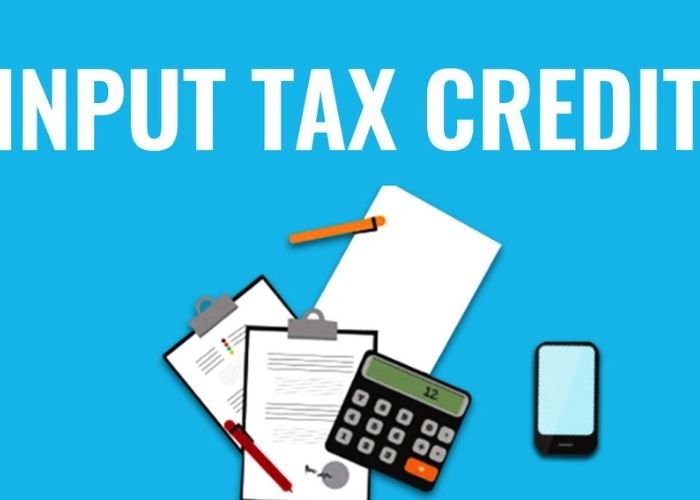Navigating the intricate landscape of Goods and Services Tax (GST) in India demands a keen understanding of the tax framework, particularly when it comes to claiming Input Tax Credit (ITC). A recent legal development, highlighted by the Hon’ble Madras High Court, sheds new light on ITC entitlement, emphasizing the pivotal role of GSTR-2A and GSTR-9 alongside the conventional GSTR-3
Importance of ITC in GST:
ITC stands as a cornerstone of GST compliance, allowing businesses to offset the tax paid on inputs against the tax liability on outputs. This mechanism not only fosters tax efficiency but also ensures seamless credit flow across the supply chain, bolstering economic activities.
Unveiling the Trio: GSTR-3B, GSTR-2A, and GSTR-9:
While GSTR-3B serves as the primary return where taxpayers report their tax liabilities and claim ITC for a given tax period, its limitations in capturing the entire ITC spectrum are evident. Enter GSTR-2A, the repository of inward supplies furnished by suppliers, providing a comprehensive insight into eligible ITC. Complementing this, GSTR-9 encapsulates the annual financial data, offering a holistic view of ITC utilization throughout the fiscal year.

Legal Precedent: The Shamunga Hardwares Electricals Case:
In a landmark ruling, the Hon’ble Madras High Court, in Sri Shamunga Hardwares Electricals v. State Tax Officer, emphasized the unjustifiability of denying ITC solely based on GSTR-3B discrepancies. The court held that if ITC claims find substantiation in GSTR-2A and GSTR-9, their validity should not be undermined.
Implications for Businesses:
This legal precedent carries significant implications for businesses navigating the GST terrain. It underscores the imperative for meticulous record-keeping and reconciliation of GSTR-3B with GSTR-2A and GSTR-9. Moreover, it accentuates the importance of furnishing requisite documentation to fortify ITC claims, ensuring compliance robustness and fairness in tax administration.
In essence, while GSTR-3B remains pivotal in GST compliance, businesses must embrace a holistic approach by harnessing the insights offered by GSTR-2A and GSTR-9. The recent legal stride underscores the principle that ITC entitlement transcends mere formality, necessitating a comprehensive assessment of all pertinent data. By aligning with this paradigm, businesses can optimize their tax positions, foster compliance integrity, and propel India towards a more robust GST ecosystem.
भारत में वस्तु एवं सेवा कर (जीएसटी) के जटिल परिदृश्य को समझने के लिए कर ढांचे की गहरी समझ की आवश्यकता होती है, खासकर जब इनपुट टैक्स क्रेडिट (आईटीसी) का दावा करने की बात आती है। माननीय मद्रास उच्च न्यायालय द्वारा उजागर किया गया एक हालिया कानूनी विकास, आईटीसी पात्रता पर नई रोशनी डालता है, जिसमें पारंपरिक जीएसटीआर-3 के साथ-साथ जीएसटीआर-2ए और जीएसटीआर-9 की महत्वपूर्ण भूमिका पर जोर दिया गया है।
जीएसटी में आईटीसी का महत्व:
आईटीसी जीएसटी अनुपालन की आधारशिला के रूप में खड़ा है, जो व्यवसायों को आउटपुट पर कर देनदारी के मुकाबले इनपुट पर भुगतान किए गए कर की भरपाई करने की अनुमति देता है। यह तंत्र न केवल कर दक्षता को बढ़ावा देता है बल्कि आर्थिक गतिविधियों को बढ़ावा देते हुए आपूर्ति श्रृंखला में निर्बाध ऋण प्रवाह भी सुनिश्चित करता है।
तिकड़ी का अनावरण: जीएसटीआर-3बी, जीएसटीआर-2ए, और जीएसटीआर-9:
जबकि जीएसटीआर-3बी प्राथमिक रिटर्न के रूप में कार्य करता है जहां करदाता अपनी कर देनदारियों की रिपोर्ट करते हैं और एक निश्चित कर अवधि के लिए आईटीसी का दावा करते हैं, पूरे आईटीसी स्पेक्ट्रम पर कब्जा करने में इसकी सीमाएं स्पष्ट हैं। जीएसटीआर-2ए दर्ज करें, जो आपूर्तिकर्ताओं द्वारा प्रस्तुत आवक आपूर्ति का भंडार है, जो पात्र आईटीसी में व्यापक जानकारी प्रदान करता है। इसे लागू करते हुए, जीएसटीआर-9 वार्षिक वित्तीय डेटा को समाहित करता है, जो पूरे वित्तीय वर्ष में आईटीसी उपयोग का समग्र दृष्टिकोण पेश करता है।

कानूनी मिसाल: शमुंगा हार्डवेयर्स इलेक्ट्रिकल्स मामला:
श्री शमुंगा हार्डवेयर्स इलेक्ट्रिकल्स बनाम राज्य कर अधिकारी मामले में माननीय मद्रास उच्च न्यायालय ने एक ऐतिहासिक फैसले में, केवल जीएसटीआर-3बी विसंगतियों के आधार पर आईटीसी से इनकार करने की अनुचितता पर जोर दिया। अदालत ने कहा कि यदि आईटीसी के दावों को जीएसटीआर-2ए और जीएसटीआर-9 में पुष्टि मिलती है, तो उनकी वैधता को कम नहीं किया जाना चाहिए।
व्यवसायों के लिए निहितार्थ:
यह कानूनी मिसाल जीएसटी क्षेत्र में काम करने वाले व्यवसायों के लिए महत्वपूर्ण निहितार्थ रखती है। यह जीएसटीआर-2ए और जीएसटीआर-9 के साथ जीएसटीआर-3बी के सावधानीपूर्वक रिकॉर्ड रखने और मिलान की अनिवार्यता को रेखांकित करता है। इसके अलावा, यह आईटीसी दावों को मजबूत करने, कर प्रशासन में अनुपालन मजबूती और निष्पक्षता सुनिश्चित करने के लिए आवश्यक दस्तावेज प्रस्तुत करने के महत्व पर जोर देता है।
संक्षेप में, जबकि जीएसटीआर-3बी जीएसटी अनुपालन में महत्वपूर्ण है, व्यवसायों को जीएसटीआर-2ए और जीएसटीआर-9 द्वारा दी गई अंतर्दृष्टि का उपयोग करके समग्र दृष्टिकोण अपनाना चाहिए। हालिया कानूनी प्रगति इस सिद्धांत को रेखांकित करती है कि आईटीसी की पात्रता महज औपचारिकता से परे है, जिसके लिए सभी प्रासंगिक डेटा का व्यापक मूल्यांकन आवश्यक है। इस प्रतिमान के साथ जुड़कर, व्यवसाय अपनी कर स्थिति को अनुकूलित कर सकते हैं, अनुपालन अखंडता को बढ़ावा दे सकते हैं और भारत को अधिक मजबूत जीएसटी पारिस्थितिकी तंत्र की ओर प्रेरित कर सकते हैं।



